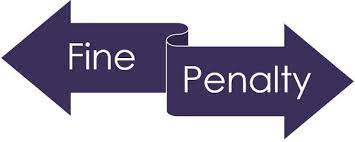There were recently two significant speeches by Department of Justice (DOJ) officials at the American Bar Association National Institute on White Collar Crime. The first was by Deputy Attorney General Lisa Monaco. The second was by Acting Assistant Attorney General Nicole Argentieri. They both had important remarks for the compliance professional. I have taken a deep dive into both speeches and what indicates compliance programs, compliance professionals, DOJ expectations, and Foreign Corrupt Practices Act (FCPA) enforcement going forward. We have previously considered the Monaco speech and began exploring the speech by Nicole Argentieri. Today, we conclude with remarks by Argentieri regarding how the DOJ will put these policies into practice and what they mean for compliance professionals and programs going forward.
Robust Compliance
The DOJ has either concluded or is in the middle of an FCPA industry sweep through oil and energy trading companies. In addition to Gunvor, there have been enforcement actions involving Vitol Trading, Glencore, and Freepoint. Argentieri noted that as a part of their resolutions with the DOJ, “each of these trading companies was required to make critical enhancements to their compliance programs to prevent future violations of the FCPA. Companies that take forward-leaning steps on compliance will be better positioned to certify that they have met their compliance obligations at the end of the term of their agreements, as is now required in corporate resolutions with the Criminal Division. These prosecutions also help set the tone for the energy trading industry as a whole — they show that a robust compliance function is critical.”
Corporate Culture
It all begins with corporate culture. The DOJ will assess the corporate culture and a company’s prior misconduct in determining the appropriate form of resolution and the financial penalty. This is where culture becomes critical, particularly for the recidivist, because, as Argentieri noted, “we will not hesitate to require substantial penalties — including, where appropriate, guilty pleas — for companies that show themselves to be repeat offenders.”
Coupling that statement with the superior resolution obtained by ABB and Albemarle shows that the DOJ is serious about corporate culture. The bottom line is that a company can move to a culture of compliance if senior management is committed to the effort. One need only consider the superior result obtained by the first three-time recidivist ABB. Culture is critical, and you must demonstrate that you have assessed and worked to improve your corporate culture.
Clawbacks and Holdbacks
One of the key initiatives brought forward under DAG Monaco’s tenure has been around incentives and consequences. However, under DAG Monaco’s tenure, incentives and consequence management were further refined in the 2023 Evaluation of Corporate Compliance Programs (2023 ECCP). It was also enshrined in the DOJ Compensation Incentives and Clawbacks Pilot Program (Pilot Program), which has two components: (1) incentivization of compliance and (2) disincentives through clawbacks and holdbacks.
Argentieri pointed to the SAP resolution as a key example of how clawbacks and holdbacks can benefit a company. She noted, “Even before its criminal resolution, SAP had adjusted its compensation incentives to align with compliance objectives and reduce corruption risk.” She said, “SAP also took advantage of the second part of the Pilot Program, which allows companies to reduce their fines when they withhold compensation from culpable employees.” The DOJ “reduced SAP’s criminal penalty by over $100,000 for compensation that the company withheld from certain employees.”
However, the pilot program requires a real effort from the company regarding clawbacks and holdbacks. SAP “went to great lengths to defend this corporate decision, including through litigation.’ Argentieri believes that “These actions sent a clear message to other SAP employees—and employees of companies everywhere—that misconduct will have individual financial consequences. This is another example of the company’s remediation that supported our decision to award a 40% fine reduction.”
Before SAP, Albemarle was “the first company to receive a fine reduction under the Pilot Program in an FCPA resolution last year.” While Gunvor did not engage in clawbacks or holdbacks, Argentieri applauded their efforts in incentivizing compensation, relating that “Gunvor had already updated and evaluated its compensation policy better to incentivize compliance with the law and corporate policies.”
Argentieri concluded this section by stating, “All of these policies should send a simple, but strong, message: being a good corporate citizen is not just the right thing to do. It is good business. Those who step up will be able to unlock the benefits afforded by our policies. And those who do not will face stiff punishments. And for companies making the tough decision of whether to disclose, take note — we now have more ways than ever to discover misconduct.”
The Bottom Line
DAG Monaco’s speeches and Nicole Argentieri’s provided significant information for the compliance professional. Both are the DOJ expectations for a best practices compliance program and what a company needs to do if they find themselves under an FCPA investigation. DAG Monaco made four key points: (1) the DOJ will invest the most significant resources in the most serious cases, hold individuals accountable, and pursue tough penalties for repeat offenders absent a significant culture shift and remediation. (2) The Voluntary Self-Disclosure Program is a key component of enforcement and incentives. (3) The DOJ whistleblower bounty program should lead to new referrals to the DOJ. (4) Compliance professionals should be ready to address new, disruptive technologies, such as the rise of AI, through their corporate enforcement programs.
Argentieri emphasized details in compliance programs. It all starts with corporate culture, but companies must strive towards robust compliance programs, including effective internal controls, incentives for employees to work ethically and in compliance, and significant consequences for failure to do so: vigorous internal reporting, triage, and investigative protocols. Compliance professionals and compliance programs have never been more important for companies.





